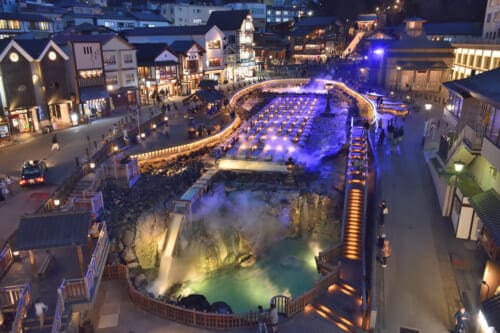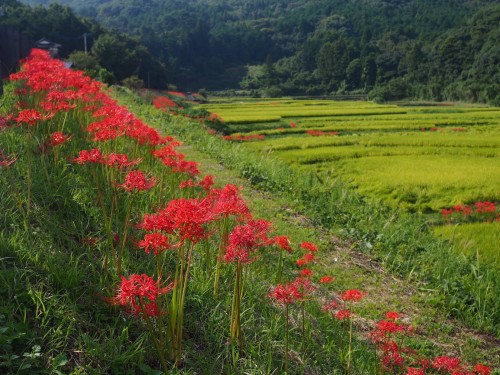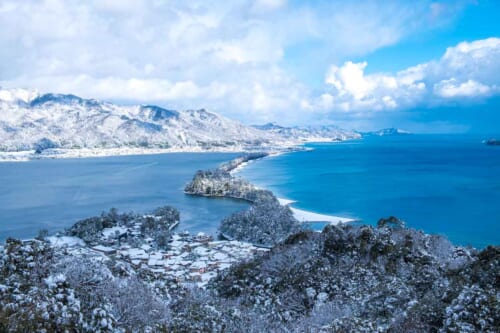A phoenix is rising in the shadow of Osaka, but you’ll need to look closely. It rises slowly and deliberately from the ashes of a disaster that occurred nearly 30 years ago. In the small hours of January 17, 1995, the Great Hanshin Earthquake tore through the region, lasting only a few seconds but wreaking unthinkable havoc on the port city of Kobe. Thousands of lives were lost, hundreds of thousands of buildings destroyed, all in an instant. But, now rises the phoenix.
Kobe has long been the underdog, an afterthought in the conversation that includes Osaka and Kyoto. Never mind that the rise of post-WWII Japan was built on the back of its port, once the most active container port in the world. Or before that, it had a thriving international quarter packed with art deco-inspired buildings that made it look like a mini-Manhattan. To the simple eye, Kobe lacks the appeal of the ancient cultural landmarks of Kyoto and the frenetic nightlife of Osaka. The 1995 quake stripped Kobe of its economic significance, and with only 3% of the city’s properties covered by earthquake insurance, the disaster was nearly fatal to many of the city’s businesses. At this point, a lesser metropolis might have thrown up its hands and given in to its fate as a second-rate and, ultimately, overlooked city.
But in the years since, Kobe has quietly reinvented itself, focusing on its best features while slowly rebuilding from the rubble, stronger and better than before. It flies under the radar as a place many people desire to live, despite its underrated appeal as a tourism destination. Yet those who do visit Kobe are rewarded for taking a chance on a city nobody except its residents seems to understand.
There are three pillars of Kobe’s culture: its international flare, its art and music communities, and its innovation in construction and architecture. Each of these pillars represents something distinctive to Kobe and the city has taken pride in highlighting these areas to make them stand out from the rest.
Kobe is One of Japan’s Most Multicultural Cities
Kobe didn’t become an international city by accident; at the end of the Edo age of the samurai, the new Meiji Government sought to strengthen its ties with the world and established foreign settlement areas in port cities like Kobe and Yokohama. Western architects were hired to design the buildings and houses to be comfortable for foreign residents, but the construction and materials were locally sourced. This created a fusion of Western and Japanese architecture, incorporating Japanese building techniques and materials with decidedly Western-styled designs that are rare to see in entire neighborhoods in Japan.
Kobe became such a popular place for foreigners to live in Japan that the population soon outgrew its original neighborhood and began moving up the hillside to Kitano, an area too far from the sea to be appealing to the local fishermen. Over time, pockets of diverse neighborhoods developed around Kobe: Jewish, Chinese, Islamic, and others. While in America and other countries, we take such diversity for granted, many Japanese cities are said to be culturally homogeneous, making Kobe stand out among a crowd of Japanese metropolises. Best of all, we see such cultures and religions living side-by-side in peace in Kobe; the city’s Jewish synagogue is just a few hundred meters from the Muslim Quarter, containing the oldest mosque in Japan.
Kobe as a Center of Modern Art and Music in Japan
Kobe’s musical culture pre-dates WWII to the ‘Roaring 20s’ when musicians from around the world came on ships to perform in Japan. Jazz was a genre that stuck in Kobe; perhaps its creative and improvisational style fit well with the overall cultural climate of the city. Kobe became the birthplace of Jazz in Japan, supplanting even the cultural capital of Tokyo and attracting top-name artists to its clubs and bars. You can still catch a live Jazz performance in the city nearly any night of the week at various venues, including the iconic Sone, where Jazz enthusiasts have been enjoying the music for decades.
Kobe’s rise as a center for the arts is more recent but far from accidental. Artists from around Japan have chosen Kobe as home due to its international influences and cultural flexibility. Teruhiro Yanagihara is an internationally renowned designer who chose Kobe for his flagship gallery-laboratory, the urban-zen VAGUE KOBE. It was created from the former Chartered Bank building, built in the art-deco style of the 1930s and survived the WWII bombings and the 1995 Great Hanshin Earthquake. Yanagihara chose Kobe due in part to its physical connection between Japan’s main island of Honshu and his home island of Shikoku via Awaji Island and its bridges and in part to its modern attitudes toward art, which have attracted other cutting-edge designers, such as architect Tadao Ando, who has designed countless buildings around the city, and Frank Gehry, who contributed the larger-than-life Fish Dance sculpture to the city’s waterfront.
The Past and Present of Kobe’s Innovative Architecture
Over the centuries, the city’s architecture has been influenced by many factors, but 30 years ago, one single event changed everything. In 1995, the Great Hanshin Earthquake violently shook the Kobe awake. A mere 10 seconds long, it led to the collapse of over 400,000 buildings and claimed over 6,400 lives. It leveled Kobe Port, which never again regained its economic significance, as shipping was redirected to other Japanese ports, and most never returned.
Following the quake, Kobe became a role model of disaster survival and recovery. The Disaster Reduction and Human Renovation Institution (DRI) was established as a facility teaching people how to prepare for future earthquake-related disasters, which are not an “if” but a “when” in Japan, a country straddling the ‘Ring of Fire.’ But the facilities also teach people how Kobe and all of Japan became safer after the 1995 earthquake. Due to the damage done by this disaster, earthquake codes were made more rigorous nationwide, and today, earthquakes more powerful than the Great Hanshin Earthquake have done far less structural damage due to stricter building codes and improved earthquake-resistant technology.
Yet, even as Japan looks to future technology to protect against quake-related disasters, it can also look to its past. For over 1,000 years, Japan has been constructing some of the world’s finest and most durable buildings, using primarily wood and without nails. One only has to look at the regal Himeji Castle not far from Kobe, which has survived four centuries of natural disasters and a direct hit from a WWII bomb (which thankfully didn’t explode) to see how durable traditional Japanese construction has become.
The Takenaka Carpentry Tools Museum, located steps away from Shin-Kobe Station, helps preserve the knowledge of the ingenuity of traditional Japanese construction methods. Drawing parallels between the advancement of construction tool technology and the refinement of Japanese architecture over the centuries, one can appreciate the incredible skill and knowledge behind traditional buildings such as temples, shrines, and castles. Even the museum itself has been constructed using the finest examples of these techniques and building materials.
How To Make the Most of Your Visit to Kobe
Most visitors to Kobe come on a day trip from Osaka or Kyoto, perhaps to sample sake from the historic Nadagogo area, which has produced sake for over 700 years. They may also explore one of Japan’s largest Chinatowns or find a restaurant serving Kobe beef (spoiler alert: they are everywhere).
But Kobe demands more of your attention than just a few hours. It is a city that needs to be walked around, to be admired by pounding its pavement or feeling the textures of its historical buildings. To enjoy a nightlife that feels less chaotic than in Osaka and more lively than Kyoto.
Like its neighboring cities, Kobe is connected to Japan’s fast and convenient Shinkansen line at Shin-Kobe Station. For those using a JR Rail Pass, Kobe is essentially a free extra stop on your Japan travels, but if you aren’t purchasing a Rail Pass, less expensive local train lines also serve Kobe from Osaka and Kyoto.
So, take a day or two from your Osaka and Kyoto itinerary and give some of your time to Kobe instead. You won’t be sorry you did it. For Kobe is an underdog’s tale, rising from a tragic past to become a symbol of Japan’s future.







No Comments yet!